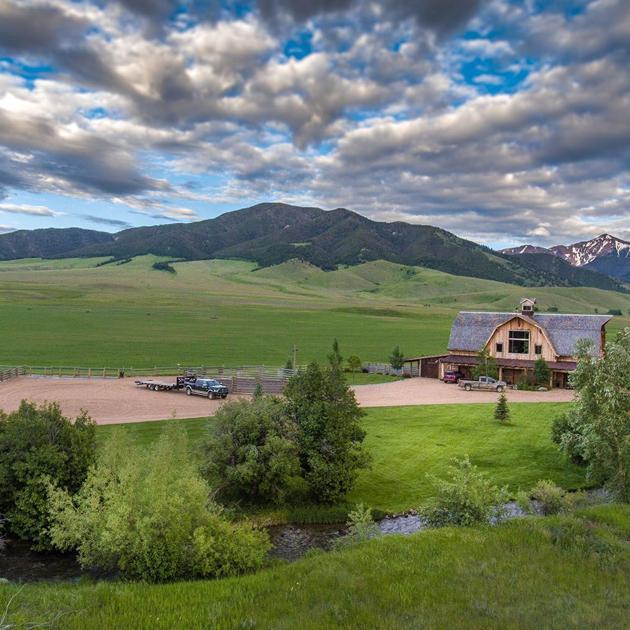Although the novel coronavirus has been the death of some businesses, it appears Montana ranch sales are cruising along at a heated pace.
“It’s the craziest year I’ve ever seen,” said Jim Taylor, director and real estate partner at Hall and Hall. “People just want to get out of wherever the hell they are.”
A 50-year veteran of ranch sales, Taylor said because the rate of return from buying a ranch is low, it isn’t always a compelling investment when there are other alternatives. But, right now he is working with buyers who are seeing fewer stable alternatives.
“People look at them as an investment even though the ranching business isn’t good,” he said.
Hot summer
In his 33 years in the business, Bozeman ranch broker Jeff Shouse, of Live Water Properties, said he’s never seen anything like this summer’s aggressive buying.
“By the first of July we had exceeded our whole production compared to the year prior,” he said, despite a quiet spring.
The jump in real-estate sales is somewhat reflected in First Interstate Bank’s third quarter earnings statement. The bank’s residential real estate loans increased $54.6 million, or 4.3%, compared to last September.
Those loans don’t reflect big buyers who are paying cash, Taylor pointed out.
Going up
Buyers with deeper pockets are needed as land prices continue to rise and the amount of land for sale shrinks.
Shouse’s niche has been recreation properties in the $2.5 million to $3 million range. This year those prices have doubled.
“The sub-$5 million properties are gone,” he said. “Everyone I know has multiple buyers looking.”
The buying binge isn’t isolated to Montana, he added. His fellow brokers in Wyoming, Colorado, Idaho and Washington are seeing the same high demand.
“I had three deals for full price sight unseen, contingent on them looking at them,” he said.
Some buyers haven’t even been to Montana, Shouse said, noting they learned about the state’s beauty by watching the television show “Yellowstone,” about a ranching family starring actor Kevin Costner.
Reasons
Inflated prices aren’t isolated to Montana ranch properties. According to the Bozeman Daily Chronicle, the median price of a home in August was $584,000 in the college town, up by more than $100,000 from a year earlier. Shouse said when he started in real estate in 1987, homes in the town’s university district were selling for $65,000. The same places now are valued at more than $1 million.
“It’s definitely a sellers’ market,” he said.
Andy Rahn of Montana Land Source, a website tracking land listings and sales in the state, said he’s not seeing sales higher than last year yet, but that could change as volume has increased in the last two months. He also noted there are fewer properties on the market this year, which surprised him. He speculated that may be due to the fact that sellers are worried they won’t be able to find another home or may be rethinking leaving their Montana refuge when there’s a pandemic.
There may be several factors driving buyers to more rural areas, Rahn said. Some have the “get me out of here kind of mentality,” he said, which may be propelled by masking and social distancing mandates to disagreements with their home state’s politics or fear of social unrest. Gun sales, after all, are booming.
Fay Ranches’ website also theorized that some families see rural areas as safer from COVID-19 if it sticks around. Plus, the reasons they enjoy urban areas — museums, concerts, restaurants — now seem less safe or even unattractive. Outdoor activities are more appealing for those seeking to avoid being infected by the novel coronavirus. Fay Ranches foresees the shift continuing for a few more years.
Shouse is unsure. He said some buyers had planned to buy property in the future but were urged to action by the pandemic. He’s uncertain how long the aggressive buying will continue. The first brutal winter may send East Coast and California transplants south, he said.
Those who decide to stay may now have the ability to work from home with greater ease, or with greater societal acceptance, making it less important that they’re in the office — the so-called Zoom boom. Taylor said he’s seeing that scenario play out even with the executives he works with. They used to be willing to hop in a jet or airplane to conduct a business meeting, but are now more comfortable with using a computer to Skype or Zoom.
“That whole world is definitely changing,” Taylor said. “Now they can spend more time on their ranches.”
Credit: Source link






























